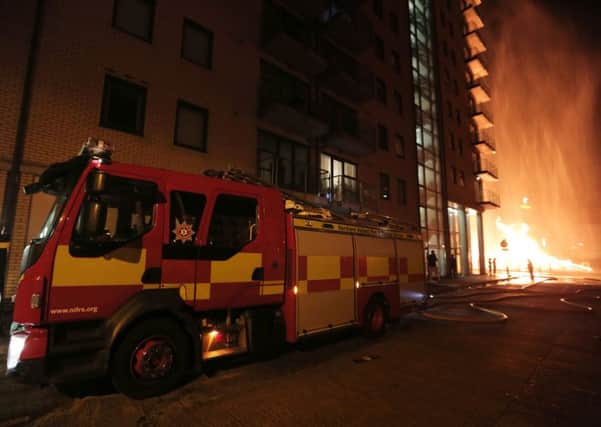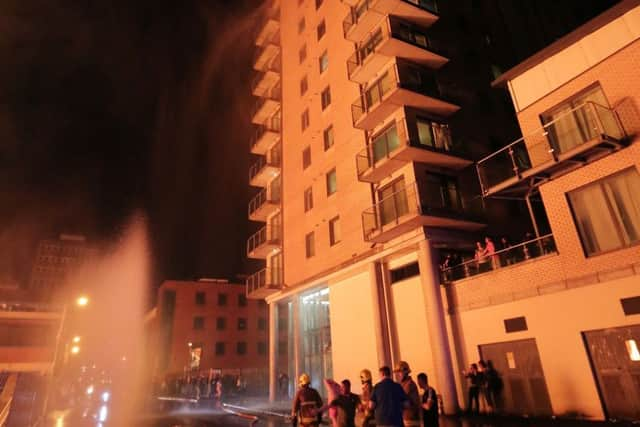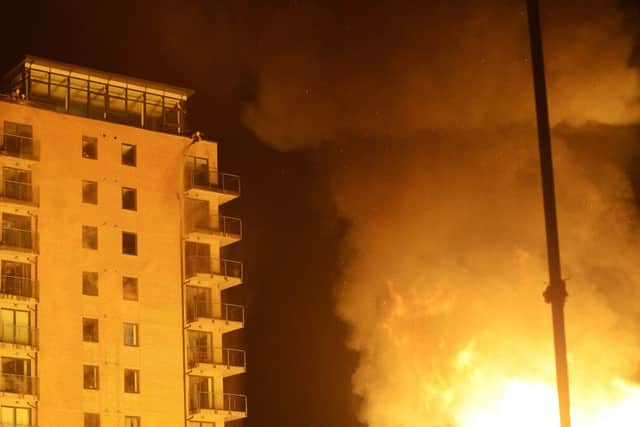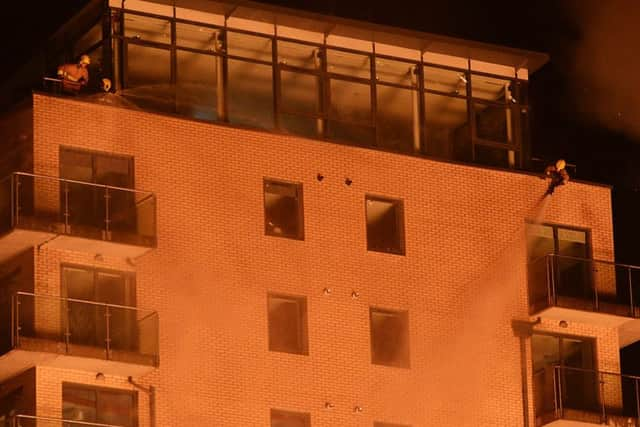Ben Lowry: Bonfires can be a fine spectacle but unionists should have spoken out about the risks


It is the fire closest to the city centre and it draws many spectators annually.
Each year, more and more of the onlookers seem to be amazed tourists who film or photograph the spectacle.
Advertisement
Hide AdAdvertisement
Hide AdIt is an awe inspiring sight. By the time the flames reach their highest point, the blaze has become a huge roaring fire of terrifying force.


Every so often, out of the conflagration, a blast of flames bursts out even higher than the rest, as if the core of the fire has its own internal flamethrower.
It makes me think of the millions of people who have died in firestorms over the centuries, particularly the 20th, and the blind terror they must have felt if there was a fire like that in buildings in front of them, and behind them, and on either side and into the distance too.
This has happened when out of control bush fires have swallowed up villages, or in war bombings such as of Tokyo or Dresden or, on a smaller scale, of UK cities such as London (and Belfast in 1941). No doubt it is how some people have met their end in Syria.
Advertisement
Hide AdAdvertisement
Hide AdThink of the children and their guardians, no doubt desperately trying to assure their kids that all will be well as the flames get ever closer.


Even the worst of our terrorist atrocities, heinous crimes such as the La Mon bomb which created a fireball, have not been fires on a scale that could take out entire sections of towns.
Watching the fire at Sandy Row, from the Great Victoria Street side, you get a glimpse into that unspeakable power of fire, from which we are so well protected in western societies in the 21st century.
Grenfell Tower was a shocking illustration of the risks, but it was also the exception that proved the rule about improved fire safety.
Advertisement
Hide AdAdvertisement
Hide AdBe wary of people who moan about ‘elf n’ safety or red tape. Tight regulation is usually there for a reason.


Consider road safety: if 1970s death rates were applied to 2017 traffic levels, 700 or so people a year would now die on Northern Ireland roads. About 70 in fact do.
This is due to: Better road design, clearer road marking, better car design, better driver training, better public awareness, tougher regulations on drink and careless driving, speeding, and, most of all, far higher seat belt use.
Most of the changes were enforced by laws that were resisted by regulation sceptics.
Advertisement
Hide AdAdvertisement
Hide AdThere have also been radical improvements in fire safety, from better building design to more fire alarms to less flammable materials (I offered old furniture to Oxfam and they, while grateful, would only take it if it had labels to show that it met modern fire standards).


That Grenfell could perhaps have been avoided if safer cladding had been used is a rare modern safety setback.
Many people in authority in Northern Ireland will, post Grenfell, have wondered: what if a Belfast bonfire causes a disaster?
At every 11th night bonfire I have been to I have witnessed idiocy, such as a drunk person showing off by rushing as close as they can get to the fire before the heat sends them scurrying back. It might just as easily be teenage girls as boys and sometimes it is adults.
Advertisement
Hide AdAdvertisement
Hide AdWhat if a tall, roaring bonfire suddenly collapses? How far might it spread? What if young people have rushed forward at that very moment?
Some years ago I was in a crowd, including tourists, at the Sandy Row site, and we were between the fire and fencing at the south eastern corner. As it got hotter, and with no way out behind us due to the fence, people began to move, but in doing so we all had to pass briefly even closer to the heat and fire to get beyond it.
We would probably have been OK if it collapsed, but perhaps not.


And is there a risk of these fires exploding if certain materials are mistakenly buried in the towering pile?
Advertisement
Hide AdAdvertisement
Hide AdThis year there was greater security than before. Police prevented access at one end of the Sandy Row site and fire crews spent more than an hour hosing a nearby apartment block. That this had to be done was a waste of human and water resources.
And it certainly did have to be done, because it has now emerged that the block was damaged despite this relentless hosing, and that it is unclear who will pay damages (see link below).
This is a failure across a range of responsible agencies that should be prepared in conjunction with each other to stop bonfires if they do not meet certain criteria.
The five to one ratio of distance (to nearest building) to height (of bonfire) needs to be enforced, and the ban on tyres also.
Advertisement
Hide AdAdvertisement
Hide AdLoyalists have good reason to be wary of republican encroachment on their traditions, but the fact that unionist councillors backed an injunction suggests they had information on dangers.
They should have defended it publicly and not doing so was a serious political failure, particularly in light of the damaged apartments, which were not even at one of the bonfires seen as most at risk.
Perhaps fire experts and councillors should tour areas next year, supported by community leaders and schools, and show young people videos of how fast fire can get out of control, and how people can be disfigured, if not incinerated.
Some communities have moved from using bonfires to beacons. Might there be a possibility of other communities abandoning small residential sites and, for example, constructing an agreed ‘tallest of them all’ 11th bonfire at a controlled site on abandoned land, far from houses?
Advertisement
Hide AdAdvertisement
Hide AdAs to burning of images and effigies, who can be surprised that loyalists mock those who supported murder (in some cases carried it out) but complain about ‘hate acts’ when their image is burned.
Burning someone’s picture is of course a display of hatred but a milder one than physically harming the person you hate.
Even so, burning images is entirely wrong. That some posters burned were of politicians as moderate as Emmet McDonagh Brown and Claire Hanna is all the more outrageous. The racist reference to Scott Sinclair was vile.
I still think the 11th night bonfires are a dramatic ritual, worth preserving and promoting to tourists.
Advertisement
Hide AdAdvertisement
Hide AdBut if there is a future disaster, with young people among the dead, there will be such an uproar that legislation on bonfires will be rushed through. In those circumstances, bans and injunctions will be enforced somehow.
Next year loyalists should pre-empt problems by reaching agreement with the authorities, while at the same time unionist councillors allay concerns about cultural erosion.
• Ben Lowry (@BenLowry2) is News Letter deputy editor